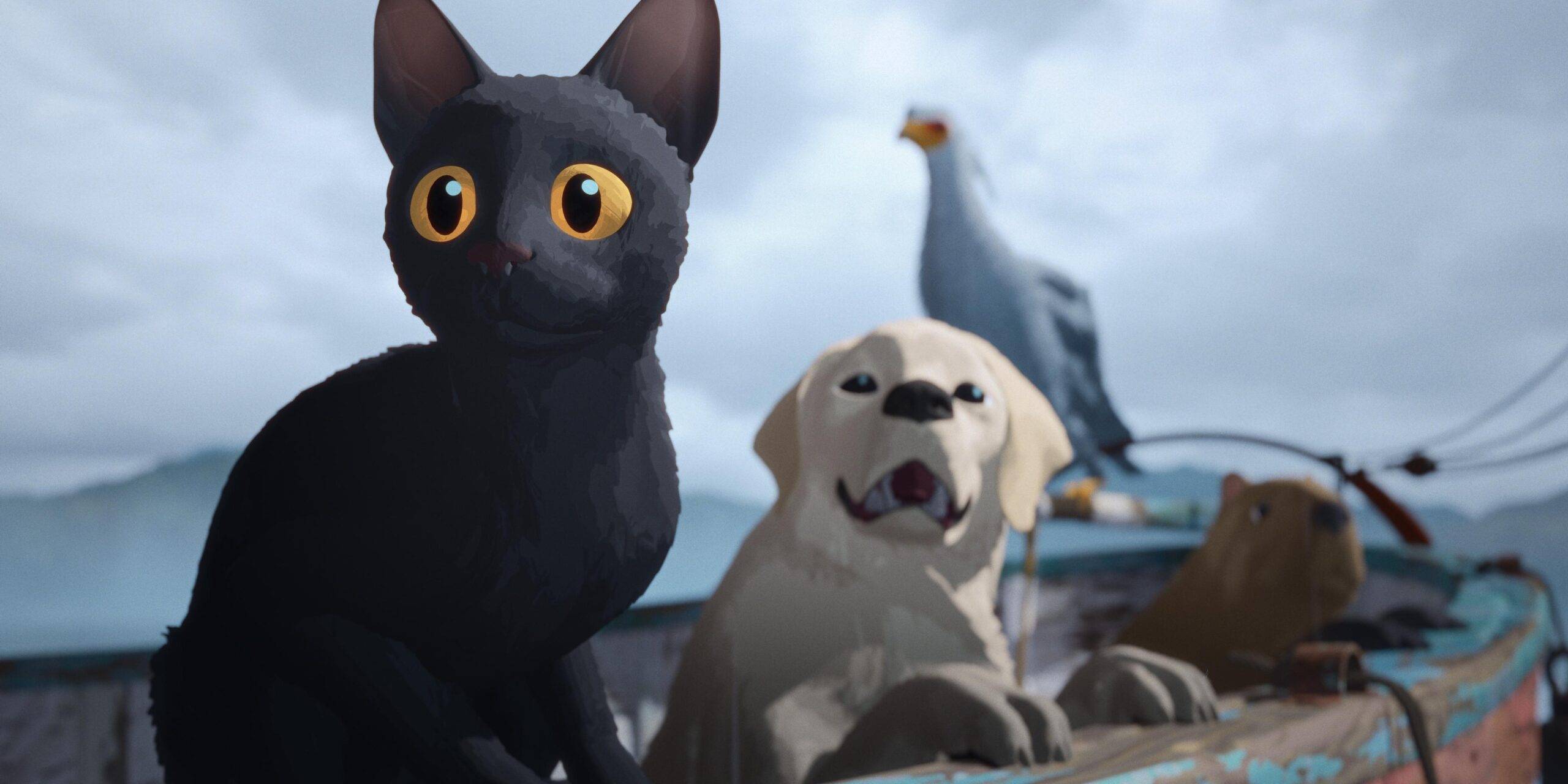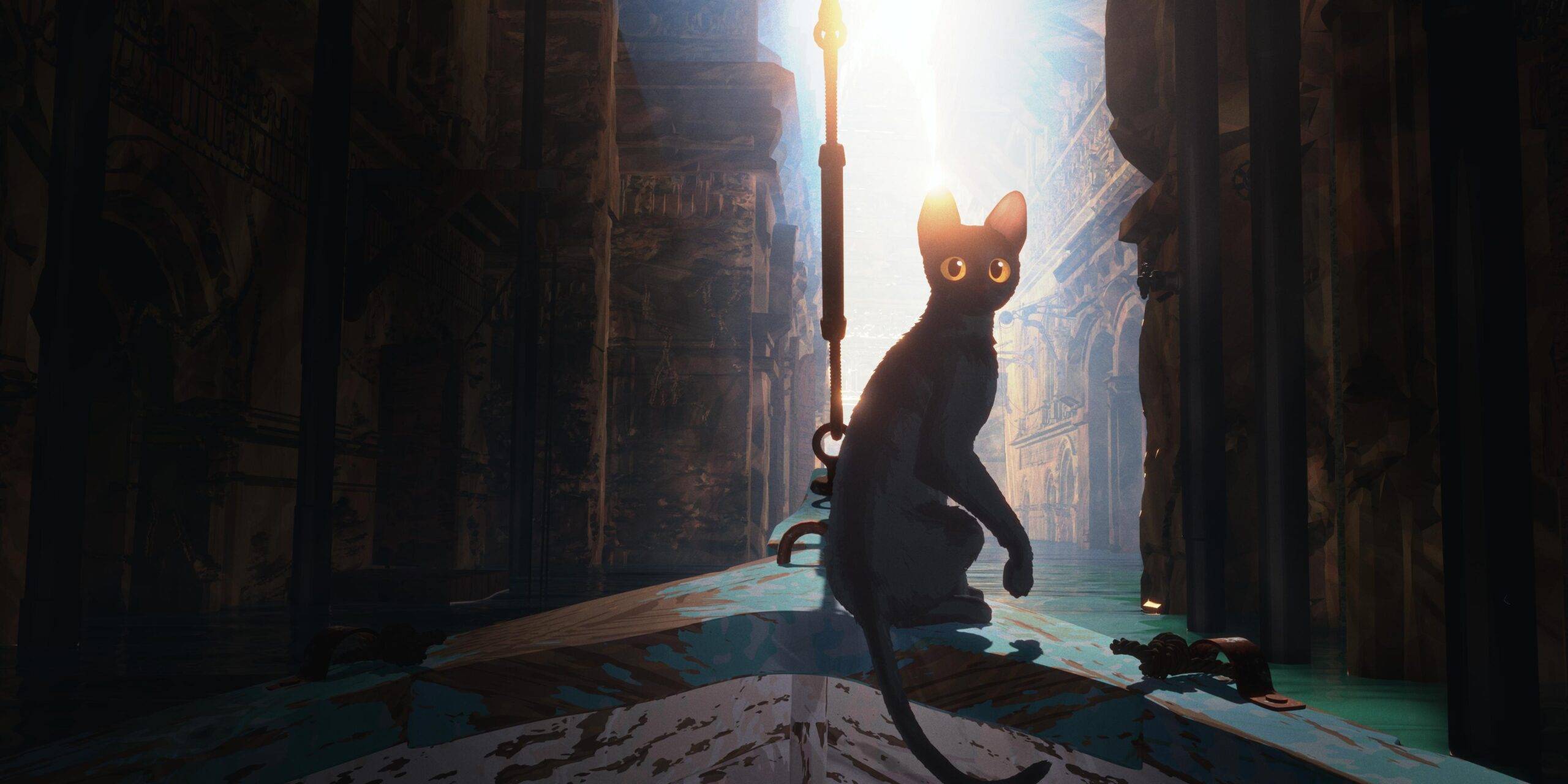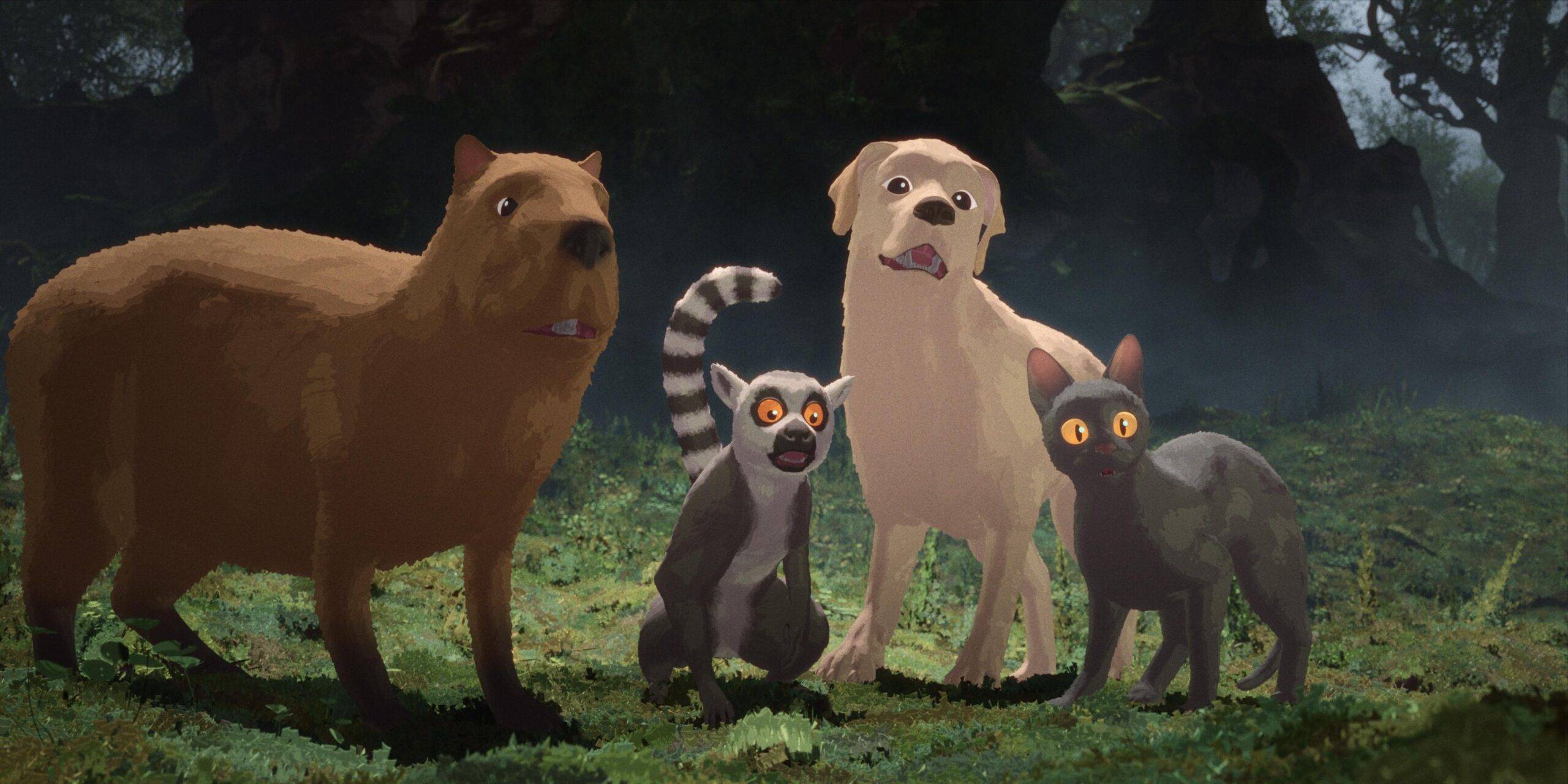FLOW Movie Review
Flow Movie Review | I don’t often review animated films here, but after watching Flow, I felt compelled to talk about it. Full disclosure: I have two black cats—one of them could very well have been the model for our protagonist here—so I may be slightly biased, and Flow might resonate a little more deeply with me as a result. However, I genuinely believe that anyone with a semblance of empathy—especially for animals—will find this film powerful.
Background on the Movie Flow (2024)

The project comes from Latvian director, animator, and composer Gints Zilbalodis. He previously directed one animated feature before this, Away in 2019—a silent animated picture for which he composed the score himself. In Flow, we again have no dialogue, although we do have very accurate (and emotional) vocalizations from our animal characters.
Flow played at Cannes in the Un Certain Regard category—a section recognizing films that are a little different in content or storytelling approach. Previous films in this category include Yorgos Lanthimos‘ Dogtooth and, more recently, Molly Manning Walker‘s How to Have Sex. Notably, Flow has been chosen as Latvia‘s submission for Best International Feature at the Academy Awards—I would love to see it get a nomination for Best Animated Feature.
What is Flow About?
The film follows our protagonist, “Cat” The characters are not given names, as the film introduces them without dialogue. As such, the visual language of the film really serves as its primary method of communication with the audience. We follow Cat as a solitary, isolated creature who is forced—initially against their will—to join together with other animals in order to survive a great flood.
There’s a clear connection to Noah’s Ark, but the religious symbolism mostly ends there; it’s not a one-for-one religious allegory by any means. The animation is beautifully articulated in three dimensions, but interestingly, not every bit of the frame is fully rendered—instead, it is animated to resemble handheld footage, almost like found footage of the cat and its experiences at times.
The Animation Behind Flow

When asked about the project, the director described it as “an intuitive flow of fantasy,” connecting to the film’s title, of course, but also accurately describing the animation style—it is very smooth, flowing from scene to scene, and is remarkably enrapturing. Even with the intentionally incomplete rendering at times, the details and movements of the characters are tremendous.
Generally speaking, in mainstream animation relying on animal characters, we see these animals as stand-ins for human stereotypes—animals behaving like humans rather than true representations of their species. But here in Flow, the animation is so precise to the animal and the emotions; the minutiae of the movement are so exact that it is a reflection on the animal and not just a cheap metaphor for some not-so-subtle human characteristic.
If you have ever had a cat, the details here are tremendous— every part the body and expression – the ears and the tail, micro-movements that, if you know your animal well, tell you so much. Somewhat comedically, the animators spent countless hours watching count videos, which clearly shows in the final product.
Flow Brings Tears and Laughs

Most of the project is very grounded, rooted in subtlety, with long takes and minimalistic editing that allow the viewer to connect on a deeper level with the protagonist. It’s impressive how the film makes you empathize with an animated cat without relying on dialogue or overt emotional cues.
I watched this in a fairly packed theater at the Calgary International Film Festival, and you could hear the laughs, you could hear the sniffles—you could hear the clear empathy that almost the whole audience was able to develop with this animated cat.
This film is, somewhat surprisingly, a beautiful example to teach students in film school about the composition of a frame, about developing characters, about hitting emotional beats—all without dialogue.
There’s one scene where the film veers into the surreal, aligning more with the director’s previous work in Away; without giving any spoilers, it’s a beautiful moment in an otherwise raw and grounded narrative, and the meaning of the scene can be interpreted in a few different ways, adding depth to the overall experience.
The sound design is tremendous, particularly in scenes that shift between underwater and above the surface, and the micro-expressions and vocalizations from the animals are brilliant—the meows, the cries—all conveying subtle differences in meaning and emotion.
Final Thoughts on Flow
All that being said, the film runs just under 90 minutes, and it probably couldn’t push much longer without risking the audience’s attention; it’s a fairly simple film in many ways—no dialogue, following one animated character and their interactions with other animals—and the length feels perfect.
The thematic exploration isn’t particularly deep—it’s about friendship, the balance between independence and relying on others, and, as the title suggests, going with the flow and not forcing yourself upon the world; it touches on our interactions with nature. While these themes aren’t groundbreaking, the film doesn’t aim to be a philosophical treatise; instead, it offers a beautiful and immersive experience that naturally elicits empathy.
This is one of those small films that I hope get seen by more and more people because it really is something special in the animated space. If you have the opportunity to watch Flow, I highly recommend it. It’s a film that not only cat lovers but anyone appreciative of artistic storytelling will find captivating.
More Videos HERE
Full Written Reviews HERE




Saw it yesterday. Cat lover here too, but the whole array of animals in the movie is carefully considered I think. This makes me think about the Less is More approach that we sometimes miss with the overblown Hollywood approach. Which is great, I enjoy it in ocassions (The Wild Robot is superb), but sometimes, we need something else. A continuous flow indeed, metaphorically and not: its minimalistic approach underlines the most captivating moments, the magical one you mention, and anything about the unexpected animal in the movie. I feel like Humans are replaced by Nature here, which is great. These movies unlike most blockbusters mean more as time passes, like a fine meal. A little delight, indeed.
Couldn’t agree more!
Idiot, complete idiot.
Cheers!
Mikael, don’t be so hard on yourself!
oof!
Pingback: CIFF Screening Oscar-Nominated Shorts (Feb 14-16, Feb 21-23)
Wonderful allegory on life.
One might ask about the fish tho?
Animals get caught in storm and survive in a boat. Whale dies for some reason. Movie ends. What?